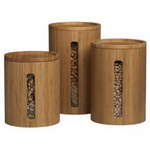|
Dry Food Storage – Maintaining A Well Stocked PantryDry food storage is not only a matter of having a well stocked pantry but food safety especially after packaged foods are opened. Once opened packaged foods should not continue to be stored in the original packaging but should be stored in air tight containers. By storing opened dry foods in air tight containers you also insure that pests and bacteria are not attracted to and make a home in your food resulting in an unsanitary situation and having to throw what was once perfectly good food away.
It’s also a matter of having a neat and orderly kitchen which certainly isn’t possible if there are a bunch of opened boxes and bags of dry foods lying around. Dry food storage containers are a much better option both for saving space in the kitchen and food safety. It is also important to keep track of when you purchase dry foods noting the purchase by date and what the expiration date will be. Package foods can lose both their nutritional value and their taste if stored past their expiration dates, which can be long; therefore to maximize both taste and nutritional value, packaged foods should be stored properly.
In addition to expiration dates, the temperature at which dry foods are stored at is important, food storage guidelines provided by the state and federal government recommends that dry foods be stored at between 50-70 degrees Fahrenheit. Dry foods should also be stored in a physical environment that is well ventilated and free of excess moisture, and the foods should be checked for pest infestations on a regular basis, which is why food storage containers are an excellent way to keep dry foods safe and palatable.
Proper food storage also allows you to reduce your grocery bill in the long run by stocking up on foods and preserving the foods that you purchase until the maximum use by time through proper food storage. Some types of dry food storage that are popular are canisters and other types of containers made of: Ceramic There are many ceramic containers on the market that contain lids with tight seals to keep out pests and contaminants and they come in some very attractive colors and designs to spice up the look of any kitchen, and these containers are often so good looking that they sit out on the counter instead of in the pantry. Ceramics can however absorb water and must be thoroughly dried before reuse. These containers are usually great for storing flour, corn meal, sugar, coffee and dry beans. However, these containers must be labeled as to their contents, it is impossible to tell what they contain and how much.
Glass Glass storage has the advantage of allowing you to see what the storage contains making it easier to identify not only what is in the container but how much of the food item is in the container making it easier to see when the container needs to be restocked. These types of containers are also attractive and can sit out on the counter or in the pantry. Glass containers are easy to clean and easy to dry before reuse. These containers are generally great for storing just about any dry food, especially pasta, rice and beans. Plastic Plastic remains a popular type of dry food storage especially with the creation of those plastics which don’t contribute the taste of the plastic to the food allowing the dry items to retain their own characteristics. Plastic storage is also generally see through so that you can tell what is in the container and how much. Plastic containers often come in various colors that allow for kitchen décor coordination. Plastic containers are also easy to wash and dry before reuse. Stainless Steel Stainless steel canisters are also a nice option for dry storage but they can be a bit pricey, they also show finger smudges easier than ceramic, glass or plastic.
For some great sections on dry food storage some great references are: • The Taste of Home Cookbook – All New Edition from Taste of Home Books, Reiman Media Group • The All New Good Housekeeping Cook Book, Edited by Susan Westmoreland, Hearst Books, New York • Betty Crocker Cookbook – New Edition, by Wiley Publishing, Inc.
Cooking Basics
|
Dry Storage Possibilities
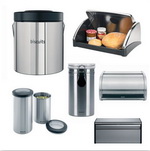
Ceramic Canisters
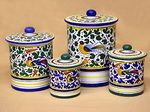
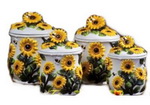
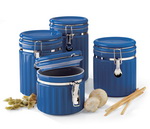
Glass Storage
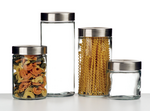
Plastic Storage
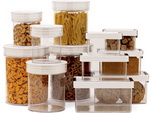
Stainless Steel Canisters
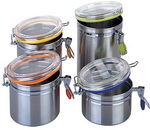
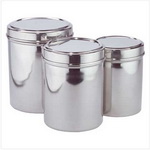
Other Storage Possibilities
